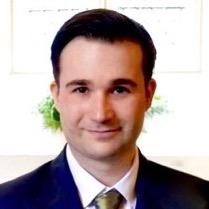Dalkia is a French company specialising in the provision of energy services. The company was created in 1998 from the merger of two companies: Esys-Montenay and Compagnie Générale de Chauffe, as part of the Vivendi group. Since July the 25th, 2014, Dalkia has become part of the EDF group, with its headquarters located in Saint-André-les-Lille. The company has three subsidiaries: Cesbron, a specialist in industrial refrigeration and HVAC, Verdesis specialising in biogas and EDF Optimal Solutions, which helps customers reduce their energy costs and CO2 emissions. Dalkia’s business activity in France is divided into 7 regions: Ile-de-France, North, East Central, East, Mediterranean, Central West and Southwest.
Activity
Dalkia is the European leader in the provision of energy services and decentralized energy production. The company works with its clients at every point on the energy chain, with the aim of encouraging sustainable development. The company provides many services including feasibility studies, engineering, energy procurement, operation and maintenance. Its main customers are industry (32%), residential sector (25%), tertiary sector (20%), collective housing (12%) and the health sector (11%). Its activities are divided between providing energy services for buildings (48%), heating and cooling network management services (30%) and energy services for industrial plants (17%). The main focus of the company is delivering energy efficient systems to its customers.
Dalkia in Numbers
Dalkia’s turnover in 2014 amounted to 3.1 billion euros. The company employs 11 260
employees and operates 84,600 facilities. Its 328 district heating and cooling networks serve 2.4
million homes, while the company also supplies 2,300 health institutions, 16,500 schools, sports
and leisure and 2 000 industrial sites. The company claims to have saved 4.4 TWh and avoided
2.4 megatonnes of C02 emissions.
Solutions
To achieve these savings, Dalkia uses many solutions using renewable and alternative energy sources, including biomass, geothermal energy, cogeneration and the optimization of district heating networks.
Biomass
Biomass is the most widely available form of renewable energy in France. Biomass consists of organic vegetable origin materials that can release energy when burned. In France, this is usually in the form of wood which is unusable in the forest industry, recovered wood or energy crops (crops grown for energy production).
Geothermal energy
Geothermal energy is the exploitation of the Earth’s internal thermal phenomena for heating purposes. The flow of fluid in the depths of the Earth or the pumping out of hot water, in either liquid or gaseous form, is used to supply heat to a network and provide all or part of the collective heating needs. Dalkia currently operates 22 wells which are used to supply heat to over 100,000 French homes. The Ile-de-France and the Mediterranean basin are particularly suited to the use of this type of renewable energy.
Cogeneration
Cogeneration is the production of two types of energy in one place: frequently heat and electricity. The heat rejected in the production of electricity, rather than being lost, is instead used to supply heating networks. Dalkia claim that this technique allows them to achieve energy gains of 10 and 15% and to reduce the emission of greenhouse gases. Cogeneration is heavily supported by Europe and the International Energy Agency and is encouraged by attractive financial packages.
District heating networks
District heating networks are facilities that produce energy for several buildings on one site. This centralization enables expensive and sometimes pollutant individual installations to be replaced by a single optimized plant managed by an expert. District heating networks can also generate a significant reduction in greenhouse gas emissions and encourage the use of renewable energies such as biomass. Dalkia operates 315 district and local heating networks, which provide heat for 2.1 million collective dwellings and 87,000 energy facilities.
Publications
Dalkia periodically publishes several documents relevant to its customers and stakeholders in the field such as:
Doppler, the company’s health news magazine
The magazine, Energies
Its annual brochure
Many online resources are also available through their web site

